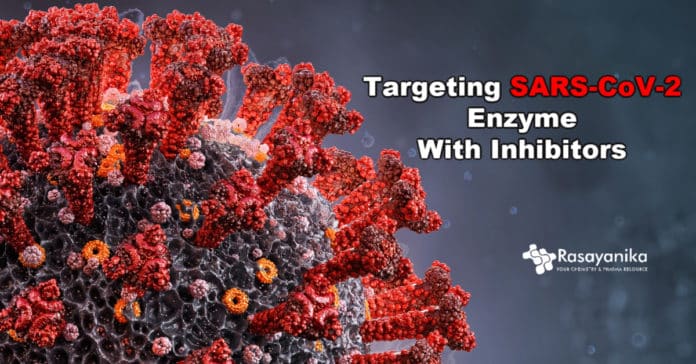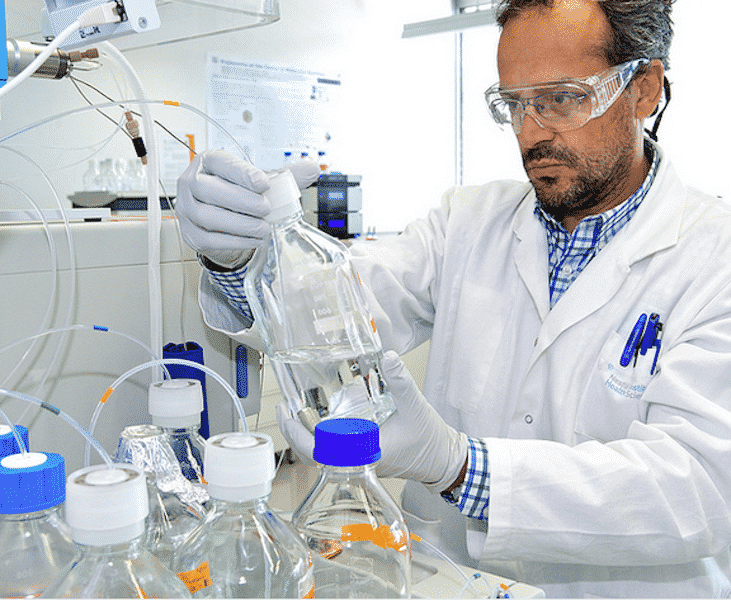Targeting SARS-CoV-2 enzyme with inhibitors
Many scientists are studying epidemiological models to predict SARS-CoV-2 propagation, as the COVID-19 pandemic continues to spread around the globe.
Nevertheless, Ernesto Estrada, a mathematician, and specialist in complicated systems, the ARAID Foundation, the University of Zaragoza, decided to concentrate on finding targets within SARS-CoV-2 virus for developing new medications against it. He knew from previous work that the main protease of the virus – an enzyme in charge of proteolytic handling of polyproteins is a superb target.
Estrada stated that when he and coworkers uncovered a significant increase in the sensitivity of the main protease of SARS-CoV-2 to tiny disruptions, it made them presume that in killing the virus, there is a role for inhibitors to play.
Inhibitors are new chemical compounds, organic molecules, or drugs that connect to a protease’s binding site to inhibit its function. Without a proteolytic enzyme helping it, the virus will certainly die.
He added, “It was found that chemists had already found some potent inhibitors of the main protease of SARS-CoV-2, which they had resolved using X-ray crystallography with the protein structure”. “It was surprising to see that this protease is extremely comparable to SARS-CoV-1, which produced the
epidemic in 2003”.When both structures were superimposed on top of each other, they almost perfectly matched.
Estrada stated, “There are just 12 out of 306 residues that do not coincide when you align the amino acid sequences of both proteases”. “Is there something concealed behind these obvious resemblances between the 2 proteases? To improve the design of medications for the virus – can we learn something from them?”
Estrada’s team has considerable experience in the analysis of networks like social networks, the internet, or food chains between species within an environment, and they decided to treat a protein as a network.
Estrada added, “They are known as protein residue networks, we portray every amino acid as a node, and by a link between the two, the communication between 2 amino acids are represented”.
The team located several structures of the main protease of SARS-CoV-1 and SARS-CoV-2 that were clean, referring that within their structures they include no mutations, ligands, or solvents. Their structure was changed into protein residue networks by the researchers.
The majority of conventional network measures revealed both structures were really comparable to each other, something his group already recognized. “However, we developed an extra advanced mathematical measure a couple of years ago that permits us to detect just how far away a perturbation within a network can be circulated. That project was of a really theoretical, mathematical nature, however, we had speculated that may be helpful for the protein research, ” said Estrada.
Hence, they put it for testing. The outcomes disclosed that the protease of SARS-CoV-2 is 1,900% extra sensitive to the long-range transmission of perturbations than the SARS-CoV-1 protease.
Estrada stated, “This implies that when a protein is perturbed within the intracellular environment, for example by water, such perturbations are transmitted via a network of intra-residues that form the protein’s 3-Dimensional structure”. “It’s transmitted only with a close environment around the amino acid that is perturbed if such perturbation is generated around a given amino acid within the SARS-CoV-1 protease”.
However, it is sent to almost the whole network – even to amino acids really far, if this perturbation occurs to one amino acid within the protease of SARS-CoV-2.
Estrada stated, “The protease of SARS-CoV-2 with tiny structural differences is much more effective within intraresidue communications, which is really significant”. “As a viral proteolytic enzyme, it should be much more reliable in doing its job. A nearly perfect job was done by the devil here, however, a door was left open. In relation with inhibitors, the vulnerable point could be this wonderful sensibility of the SARS-CoV-2 protease to perturbations.”
For large scale screening methods to identify potent inhibitors of SARS-CoV-2 main protease, the team’s strategy can be used, and consequently for developing new medicines against the virus.
The study on targeting the SARS-CoV-2 enzyme with inhibitors is published in the journal Chaos.
Author: Sruthi S

















































